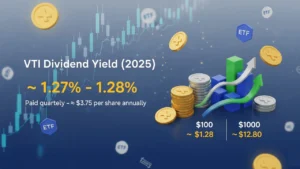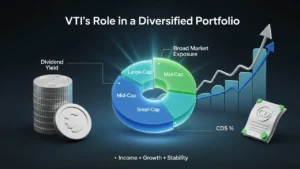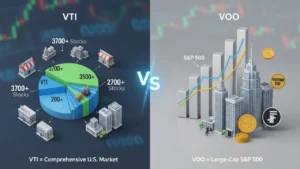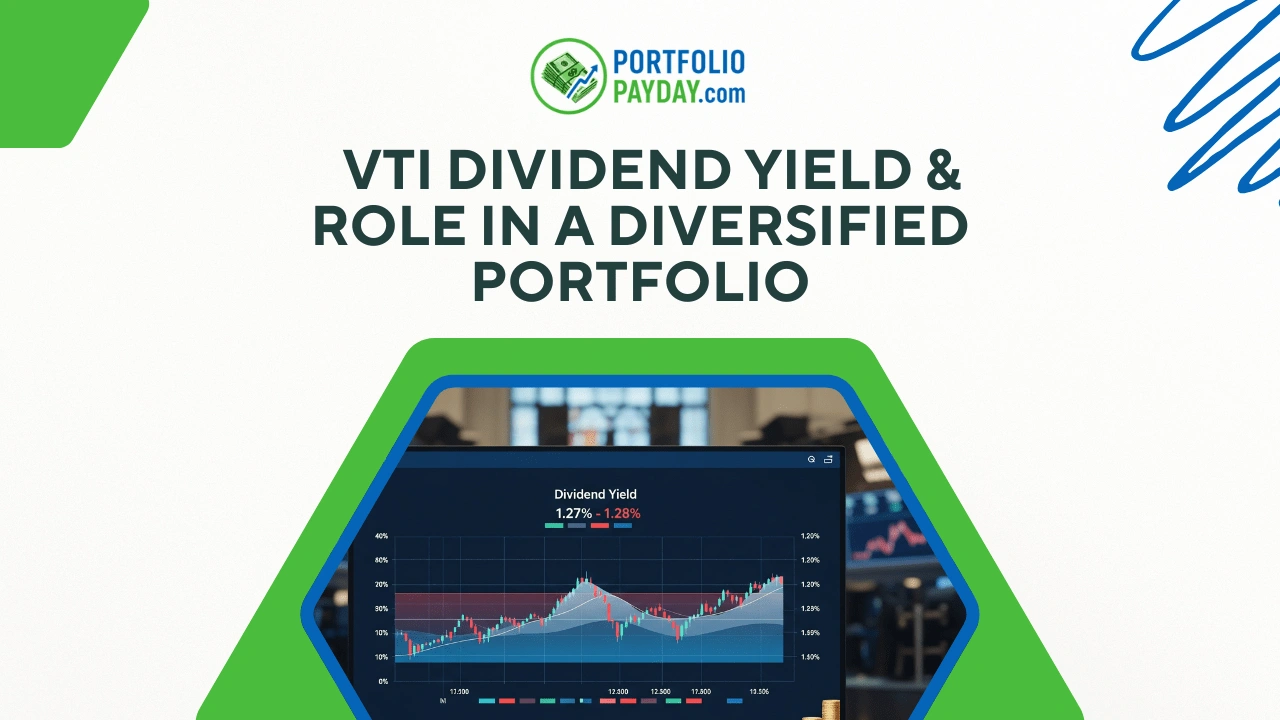Disclaimer: The following is for informational purposes only and not financial advice. Always do your own due diligence. I am not a licensed advisor.
VTI Dividend: A Comprehensive Guide to Passive Income
The Vanguard Total Stock Market ETF (VTI) is one of the most popular exchange-traded funds (ETFs) for investors seeking exposure to the broader U.S. stock market. But beyond just stock market exposure, one of the main attractions of VTI is its dividend yield. For those wondering how much VTI can contribute to your passive income strategy, you’re in the right place.
What is the VTI Dividend Yield?
At the time of writing, the VTI dividend yield is approximately 1.27% to 1.28%. To put this into perspective, if you were to invest $100 in VTI, you would receive around $1.28 in dividends annually. Given VTI’s price and dividend yield, if you were to invest $1,000, you could expect to receive around $12.80 in annual dividend payouts. These dividends are paid quarterly, with around four payments per year.
The recent quarterly dividend for VTI has been around 95 cents per share, translating to an annual payout of about $3.75 per share. For those looking to generate consistent income, this may be an appealing option.

Dividend Payout Ratio and Growth
VTI has a dividend payout ratio of roughly 31%. This means the fund returns about a third of its earnings to investors as dividends. The remaining earnings are reinvested in the fund, which helps fuel the growth of the ETF. This moderate payout ratio strikes a balance between providing income to shareholders while also allowing for future growth.
Over the past year, VTI’s dividend growth has been modest, with an increase of around 6%. For investors seeking both steady income and potential appreciation in their investment, VTI can be an excellent choice.
VTI’s Role in a Diversified Portfolio
VTI’s dividend yield and overall structure make it an attractive option for many investors. Not only does it offer broad exposure to the entire U.S. stock market—covering large, mid, and small-cap stocks—but it also provides a steady income stream that can complement other fixed-income products like bonds or certificates of deposit (CDs).
By holding VTI, investors can reduce their reliance on other income-generating assets. Additionally, the growth potential of VTI can help enhance your overall portfolio performance over time.

How Much Passive Income Can You Expect from VTI?
Now, let’s get into some specifics. If you were to invest $1 million in VTI, what kind of passive income could you expect?
Given the current dividend yield of 1.28%, a $1 million investment would generate an annual dividend income of approximately $12,800. This assumes the dividend yield remains steady, which is a realistic assumption given VTI’s historical consistency in paying dividends.
The historical dividend growth rate of VTI has been impressive. Over the last 20 years, the fund has delivered an annual compounded dividend growth rate of around 8%. This can be quite appealing for long-term investors, as it offers both a steady income and the possibility of dividend increases in the future.
How VTI Compares to Other Investment Options
When comparing VTI to other popular ETFs like the Vanguard S&P 500 ETF (VOO), VTI offers broader diversification. While VOO only holds large-cap stocks from the S&P 500, VTI holds a more diverse mix of over 3,700 stocks, including large, mid, and small caps. This makes VTI a better option for those seeking a more comprehensive exposure to the U.S. market.
In terms of performance, VTI and VOO are very similar. Both offer exposure to U.S. equities, but VTI’s inclusion of mid and small caps makes it slightly more volatile. However, this volatility can lead to higher growth potential over the long term, especially if smaller companies outperform their large-cap counterparts.

VTI’s Dividends in the Bigger Picture
For long-term investors, VTI offers a balanced approach between risk and reward. The dividend yield may seem modest, but when combined with its capital appreciation potential, it provides a solid foundation for building wealth. Whether you are reinvesting the dividends to buy more shares or taking the cash flow as income, VTI provides flexibility for different investment strategies.
Conclusion
In summary, VTI’s dividend yield of 1.27% to 1.28% might not be the highest, but it offers broad diversification, steady income, and strong growth potential. For a $1 million investment, you could expect about $12,800 in annual passive income. And as the dividend continues to grow, this income stream can increase over time.
For those trying to decide between VOO and VTI, the choice ultimately comes down to personal preference. If you want exposure to the entire U.S. stock market, including mid and small-cap stocks, VTI is a great option. If you prefer a more stable investment focused on large-cap stocks, then VOO might be more appealing.
Regardless of your choice, both VTI and VOO are solid investment vehicles that can play an essential role in your long-term wealth-building strategy.











